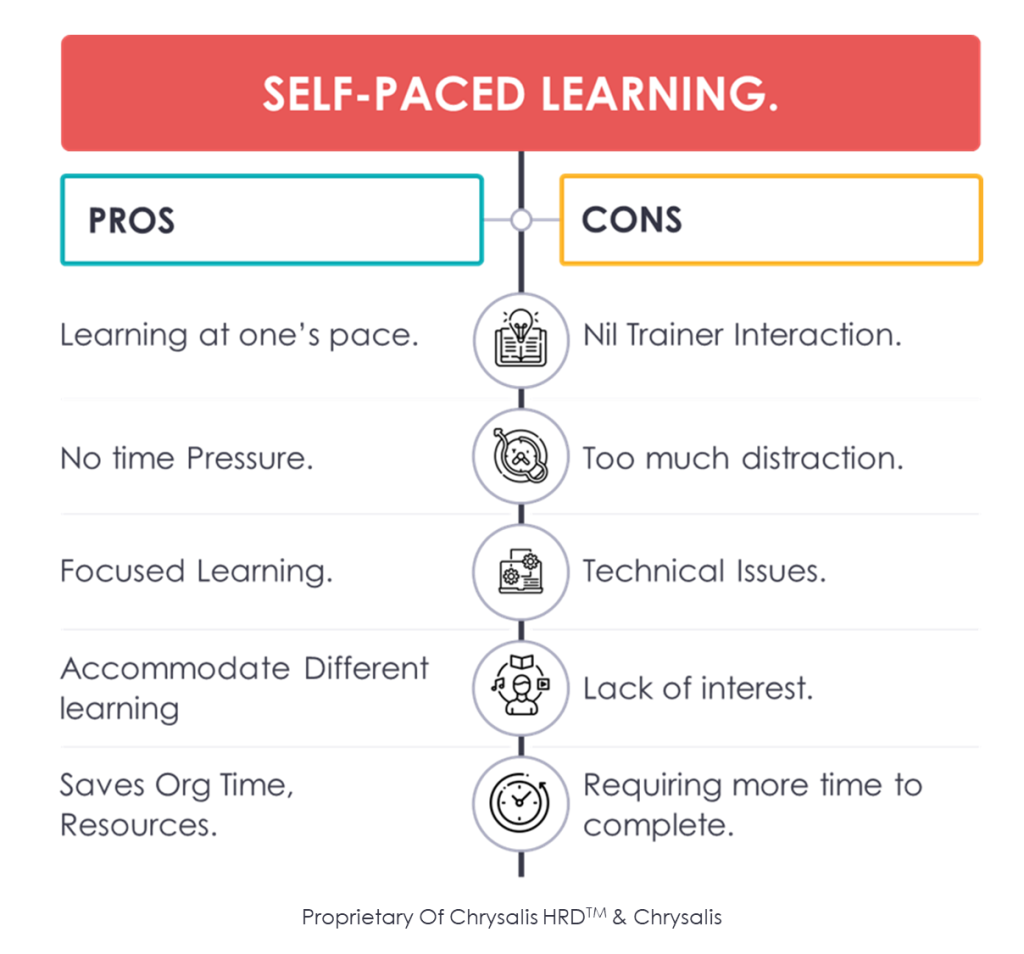It is said that ‘Knowledge shared is knowledge multiplied’. While teaching is knowledge based, training is skill based. When employees working in an organisation are trained, they are already skilled in the work they do, which is further honed by the training provided to them.
Time was when any kind of learning or skill development depended on the physical presence of the instructor and the participants and the wholehearted participation of both in the exercise. If either was lacking, the quality of training or teaching tended to suffer. Thus, if the learner’s participation was half hearted, even the best efforts of the instructors was in vain.
All this changed with the advent of online training, accentuated by Covid 19, which placed severe restrictions on any kind of mass gatherings. With the risk involved in gathering employees and the instructor in one place, online self-paced learning (SPL) gained in popularity, replacing the traditional offline mode in both training and education. In other words, asynchronous learning, where students can attend the pre-recorded classes at their convenience and from different locations, replaced synchronous learning where students and instructors attend the classes together, though from different locations. However, SPL is not an unmixed blessing, having its share pros and cons, as depicted in the following diagram.
The Pros and Cons of Self-Paced Learning

Advantages of Self-Paced Learning
Learning in One’s Own Time and Schedule:
One does not need to complete the same assignments or learn at the same speed as the others. Also, one can proceed from one topic or segment to the next at one’s own pace. Even if there is a deadline to complete a course, they could choose how and when to do so. With a set of multiple-choice questions at the end of each module to confirm the participant’s understanding, the objective of the exercise is also well served.
No Time Pressure:
SPL removes the time pressure that exists during any live training session. One need not to pretend that they understood everything that has been taught. If something is not clear, they can review the material again, before proceeding. Several studies have also found that SPL improves memory retention.
Focused Learning:
With the freedom of flexible schedules, employees can choose to learn when they can focus best, for instance, when there are fewer official or personal interruptions.
Accommodating different Learning Styles:
No two persons may have the same learning style. Some may learn fast, while others may prefer to read slowly and digest. Those who prefer to complete the course quickly would not have to wait for others to catch up. SPL makes it possible for the participants to learn as they prefer.
Saves Organisation’s Time and Resources:
The availability of several online tools helps organisations implement SPL. They enable the companies to create and upload training materials that employees may access at their convenience. They could also record in-person training sessions and publish the same.
Setting up a full day or more of in-person training takes up a lot of a company’s resources. An online training academy where all training materials are available in one place, to be accessed by the employees in just a few clicks is a much better solution.
This way the company will save a lot of money, time, and resources, besides ensuring that the employees learn the intended skills, without impacting their work and the company’s productivity.
Some Disadvantages of Self-Paced Learning
Nil Interaction with Trainers:
With the mode of training being PowerPoint presentations and relevant videos, there may be very little interactions with the trainers, leading to demotivation and boredom of learners. Also, the absence of co-trainees may take away the mood of camaraderie and friendly competition that prevail at a typical offline training session.
Too much Distraction:
Due to flexibility in completing the training, the participants may get distracted by too many competing priorities.
Technical Issues:
Accessibility of the training courses are through online modes, which require the participants to have a net enabled gadget like a smartphone, Laptop, or a computer. If the gadget is not compatible with the training platform or the uploaded material, accessing the same may become problematic.
Lack of Interest:
With too many courses available online, the employees may lack the interest and motivation to complete them, in the absence of an element of compulsion.
Requiring More Time to Complete:
Without the pressure of fixed time frame to complete the course, participants might feel reluctant to regularly participate in the same. Also, with no trainer to clarify doubts, understanding a topic using external material may take more time.
Yet, with the pros far outweighing the cons, SPL is a win-win proposition for the organisations as well as the employees and is here to stay for the long haul. It is however time for us to think of ways of improving it, for instance, by making it more engaging and interactive for the participants, than is the case now.


